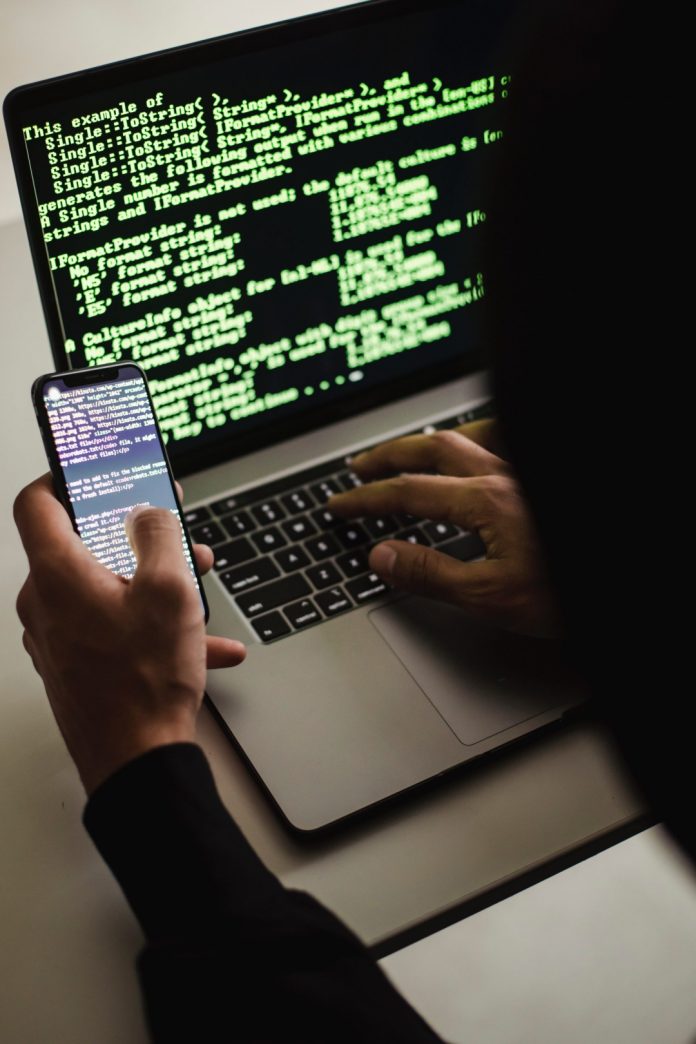Are you also tired of getting attacked by Phishing attacks continuously like me? And wondering what to do?
If your response is “Yes!” Let’s explore the vast ocean of possible responses to such attacks together. How to use SLAM method to prevent phishing attacks is the topic of today’s article.
Phishing is a form of social engineering attack that is frequently employed to obtain user information, such as login passwords and credit card details.
Healthcare businesses have been the subject of phishing attempts with a fury.
Phishing is when an attacker sends a fake email to a target in an effort to trick them into providing personal information.
1) Giving the attacker access to private data; or
2) installing harmful software on the victim’s machine or network.
Ransomware is one illustration of such harmful software.
Fortunately, phishing assaults may be readily identified as they hit your mailbox thanks to a shorthand acronym that can be used to recall them.
Many organizations are particularly concerned about cyber security now that October is Cybersecurity Awareness Month.
Understanding how to identify phishing emails in order to stop breaches is the major reason of worry for healthcare firms in particular.
So, in order to prevent phishing attacks, we will carefully go through the SLAM method to prevent Phishing Attacks.
Read more: Which variation of a phishing attack sends phishing messages only to wealthy Individuals
Healthcare businesses may utilize the SLAM approach, a straightforward technique, to help identify phishing emails.
What Does the SLAM Abbreviation Mean?
The SLAM acronym can serve as a helpful reminder of the warning signs of potential phishing emails. Sender, Links, Attachments, and Message are all abbreviated as SLAM.
- SENDER: Hackers frequently imitate a reputable sender’s email address when sending phishing emails to deceive recipients into opening the message.
Determining the sender’s email address is crucial before opening an unwanted email because of this.
Before opening an email, receivers should move their mouse over the sender’s name to see who sent it in order to verify the address.
A reputable person’s or a company’s name should be carefully verified for misspellings in email addresses. It’s also vital to remember that a company’s name will often appear in the domain address of an email it sends out.
Malicious actors frequently closely duplicate an email address from a trusted source.
For instance, “@amazon.com” and “@ammazon.com” may seem identical. In order to determine whether an email is a phishing attempt, look for additional letters, odd symbols, or small spelling mistakes.
Another thing to watch out for is a trustworthy sender or business with an email address that normally ends in the name of the firm but instead ends in something like @yahoo or @gmail.
An example of a malicious email would be one from amazonsupport@gmail.com; for a major company like Amazon, a trustworthy sender would be something like support@amazon.com.
- LINKS: Phishing emails frequently include links that provide hackers access to a recipient’s network by stealing their login information.
A link within an email should be lingered over to verify its validity, much like the sender’s email address.
Does the URL really get you to the website it claims to? Is the link address spelled correctly?
It is also recommended to go straight to the business website rather than clicking on a link within the email itself.
For instance, a reset link is frequently included in phishing emails that falsely claim that your login credentials for a certain firm have been hijacked.
However, by clicking on this link, you give the hacker access to your login information. Since most users share their login information across many platforms, it is possible that hackers may access your other accounts if they manage to obtain your credentials in one event.
The company’s website should always be manually entered into your web browser if you receive an email stating that your login credentials were hacked or that you need to change your password.
By doing so, you may be sure that you are on a trustworthy website and guard against identity theft using your login information.
- ATTACHMENTS: Never open an email attachment from a sender you are unfamiliar with. Nevertheless, you shouldn’t open unsolicited email attachments even if you are familiar with the sender.
Using the contact list from a hacked email address, hackers frequently send malicious email attachments to target the recipient’s machine.
A company is unlikely to deliver an email attachment without being asked to.
You should get in touch with the sender of the email attachment directly to verify that it is real if you want to verify the authenticity of an attachment.
- MESSAGE: Even though phishing emails have advanced over time, the message’s content can frequently be a dead giveaway. Generic salutations, spelling and grammar mistakes, as well as unusual content, are common features of phishing emails. You should not put your confidence in emails that have any of these problems.
Sometimes, the content of an email might serve as a clear sign that it is a phishing email. However, be careful since cybercriminals are becoming more skilled by the day, so read carefully and be suspicious of anything that appears out of the ordinary.
Phishing assaults surged by 281% in May of 2024. They then had another 284% increase in June.
How to use SLAM method to prevent phishing attacks?
Studies show that phishing detection skills begin to deteriorate as soon as six months after training. Employees must get constant and ongoing training on how to avoid phishing scams.
Employees start forgetting what they’ve learned, which negatively affects cybersecurity.
Want to offer your staff a “hook” to aid with memory retention? introduce the SLAM phishing detection technique.
Your defences against phishing attempts can be strengthened by security software and awareness training. We just have a few tools.
Employees and management can identify phishing emails as soon as they arrive in their inboxes thanks to the SLAM approach. But what about the next action?
If you identify or suspect a phishing email, follow these instructions:
- Don’t forward the email or open any links.
- Report the email as spam (all email accounts have this option; if you’re unsure where it is, contact your IT staff so you’re ready).
- Inform your IT staff or a third-party IT security team about the phishing email; they can block the sender’s domain address to safeguard your company.
NOTE: Request the best practices for this from your IT department. Worldwide, more than 3 billion phishing emails are sent; stopping them has little impact.
- Inform your boss or management team about the phishing email so they may warn other staff members in your company and stop the spread.
NOTE: Once more, inquire about best practices from your IT department. We advise alerting your team if a phishing effort appears to be from a customer or co-worker.
You will all now understand how to easily Prevent Phishing Attacks Using the SLAM Method. Therefore, use SLAM method to prevent yourself from Phishing Attacks. Always check the sender’s email address, carefully examine any links in emails to ensure they are legitimate, never open email attachments from senders you are not acquainted with, and occasionally the content of emails can serve as a clear sign that they are phishing attempts. Don’t subject yourself to any kind of attack by failing to properly consider these warning indicators.
Conclusion:
In today’s article we decided to briefly discussed How to use slam method to prevent phishing attacks? In my research, I learned that while there are several ways in which attackers might attack us, there is only one thing we can do to counteract these attacks and survive them.
And that is to continue being responsible and vigilant. Because of how quickly our lives are going, we frequently open these items in a rush, which is how we get into traps.
And it’s time to stop being careless and start being accountable. Because we alone are accountable for our own security.
I hope you learned a great deal from this article.







